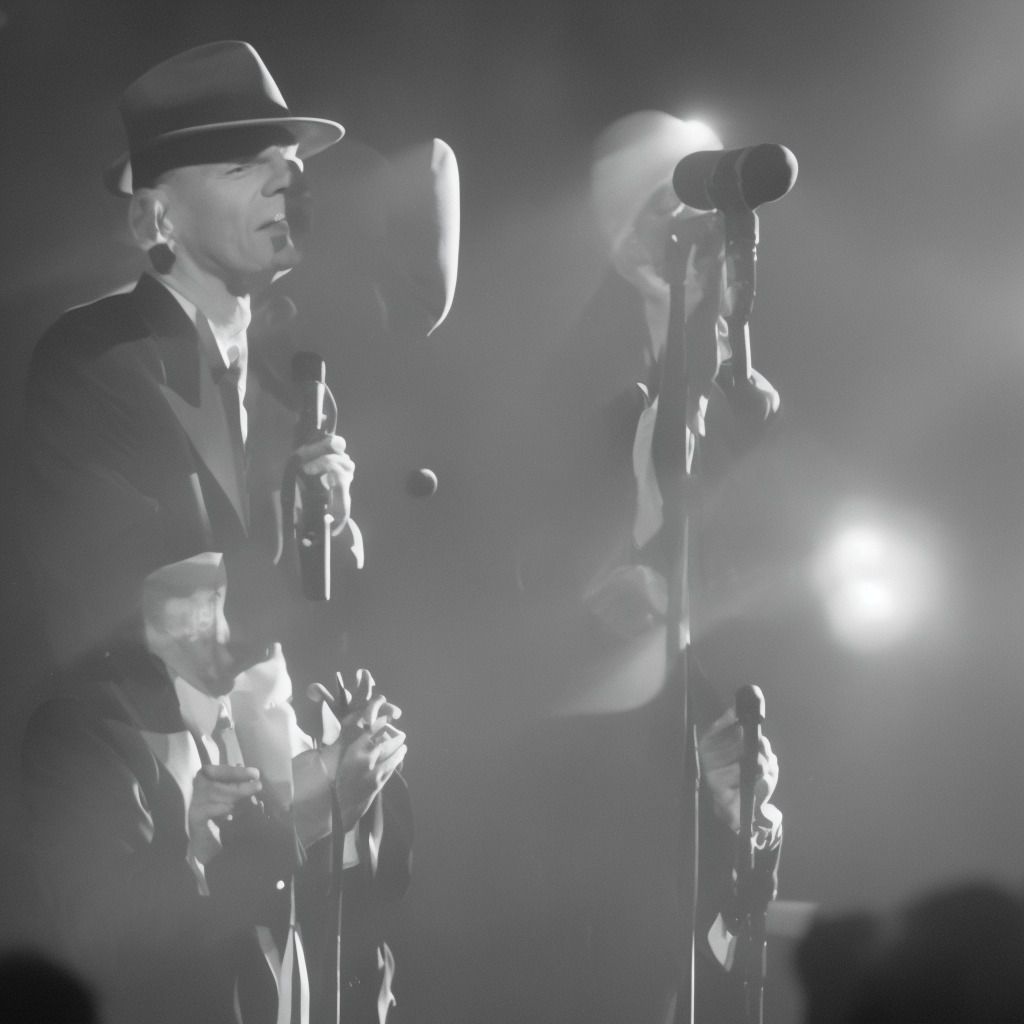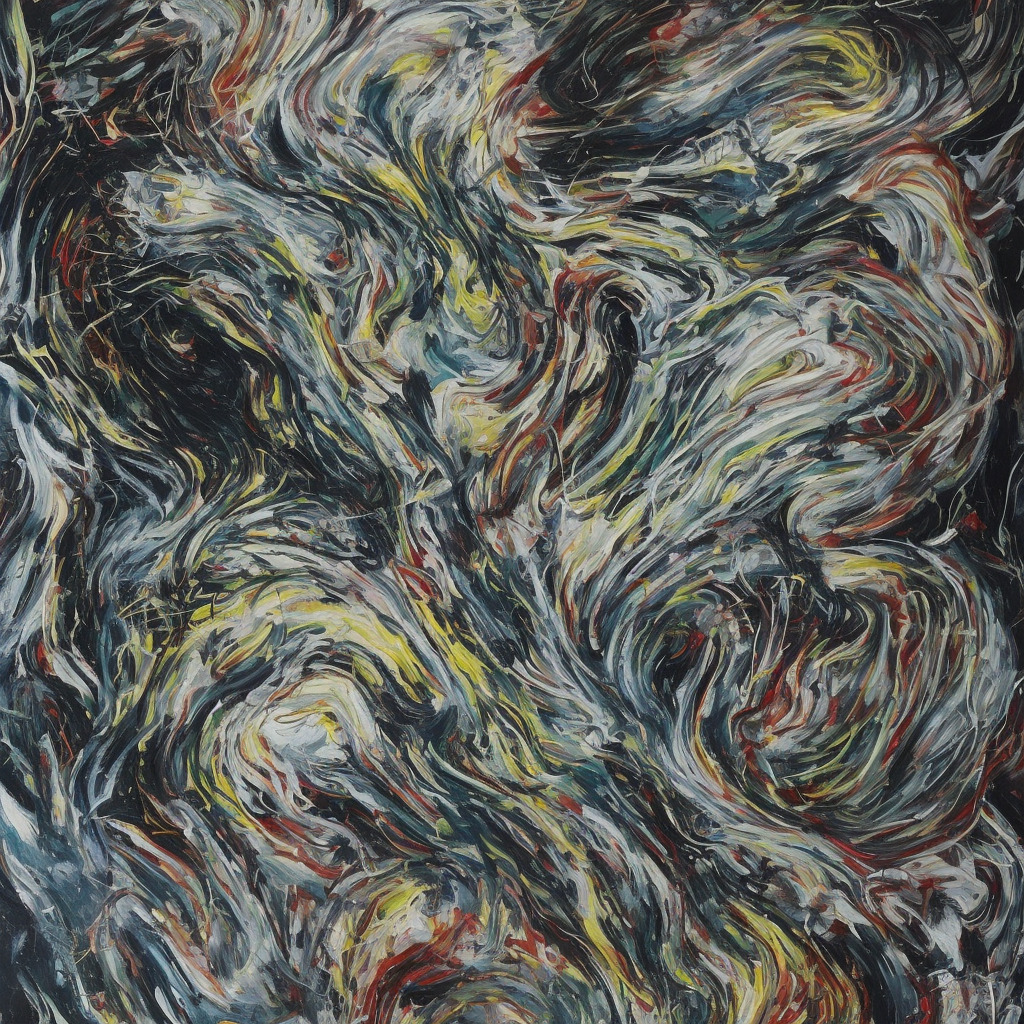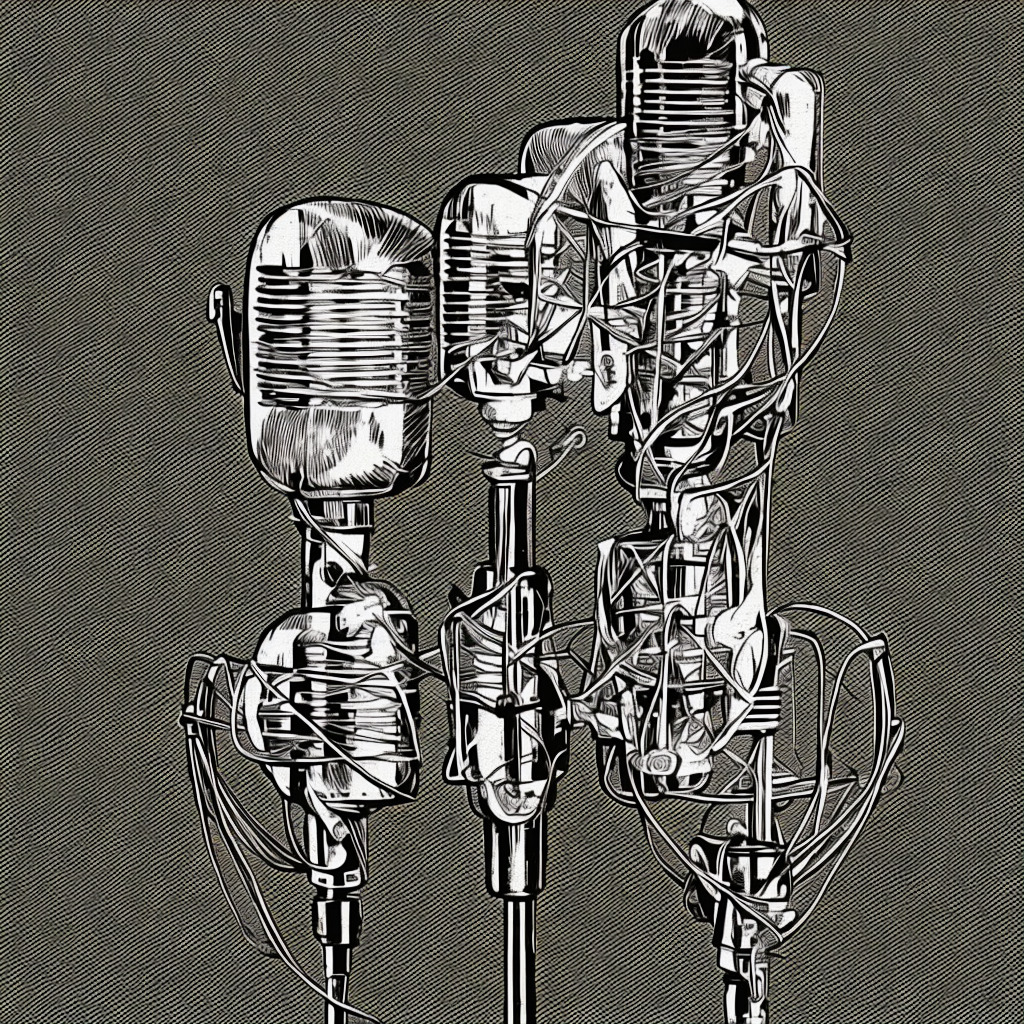Did you know?🤔 Ol’ Blue Eyes #FrankSinatra recorded #FlyMetotheMoon in ’64, but it wasn’t until ’69 that it LITERALLY flew to the 🌕 on Apollo 10! Dreams do come true! 🚀🎶 #MusicTrivia #SinatraFacts Read about it: tinyurl.com/pfmft6tw
Flying High with Sinatra’s Timeless Classic
Soaring through Sinatra’s legacy: A timeless icon captivates generations with golden voice and unforgettable tunes like “Fly Me to the Moon.”

Frank Sinatra, a name synonymous with timeless music and a golden voice, is a legend whose impact on the music industry is unparalleled. Born in Hoboken, New Jersey, in 1915, Sinatra rose to fame as a singer and actor, captivating the hearts of millions with his enchanting voice and charismatic personality. Member of the famous “Rat Pack,” alongside Dean Martin, Sammy Davis Jr, Peter Lawford, and Joey Bishop, Sinatra established himself as a vital figure in the entertainment world.
“Fly Me to the Moon,” one of Sinatra’s most celebrated songs, has its own fascinating story. Originally titled “In Other Words,” this classic tune was written in 1954 by Bart Howard. Many artists recorded the song, such as Kaye Ballard and Peggy Lee, before Sinatra left his golden touch on it in 1964. Accompanied by the lush orchestration of the Count Basie Band and the skillful arrangement by Quincy Jones, Sinatra immortalized this iconic song in his album “It Might As Well Be Swing.”
Although critical of his perfectionism and sometimes controversial personal life, one cannot deny the impeccable impact Frank Sinatra had on the music industry. With a career spanning over six decades, he has been awarded numerous accolades, including 11 Grammy Awards, a Grammy Lifetime Achievement Award, and an Academy Award for his role in “From Here to Eternity.” His influence has inspired many artists over the years and continues to resonate with audiences worldwide.
It’s important to acknowledge that not everything was perfect in Sinatra’s life. The Chairman of the Board, as he was known, had his share of ups and downs in his personal and professional life. Relationships, friendships, and even his involvement with the mafia have been a subject of controversy. However, the focus on his music and unique artistry has remained the centerpiece of his legacy.
In conclusion, Frank Sinatra’s rendition of “Fly Me to the Moon” remains a timeless masterpiece that transcends generations. This classic song, along with countless others in Sinatra’s diverse discography, showcases his unique ability to captivate and inspire listeners. His contributions to the world of music and entertainment are truly unparalleled, solidifying his place as one of the most influential musical icons of all time.
Charting the Moon’s Journey
Ascend with Sinatra: “Fly Me to the Moon” – A timeless tune soaring from 1964’s charts to the lunar surface, etching its mark on music history with each celestial rendition.

When “Fly Me to the Moon” was released as a single in 1964, it featured a captivating arrangement by Quincy Jones and the Count Basie Orchestra that perfectly complemented Frank Sinatra’s velvety voice. Although it’s important to draw attention to the song’s chart performance, it’s equally essential to consider its enduring impact on the music world.
Upon its release, “Fly Me to the Moon” enjoyed moderate success on the charts. It debuted on the Billboard Hot 100 on August 15, 1964, at No. 89, and climbed its way up to a respectable peak position of No. 14 on September 19, 1964. It spent a total of 10 weeks on the chart, which is a notable achievement considering the competition in the music industry during that era. The song also made its mark on the Adult Contemporary chart, reaching No. 4 and spending 18 weeks on that chart.
Not only did the song find success in the United States, but it also gained international acclaim. In the United Kingdom, “Fly Me to the Moon” peaked at No. 6 on the UK Singles Chart on November 7, 1964. It spent a total of 12 weeks on the chart across the pond, further showcasing its popularity.
While the song’s initial chart performance was impressive, it’s the lasting influence of “Fly Me to the Moon” that truly cements its place in music history. Its association with the Apollo 11 moon landing in 1969, when astronaut Buzz Aldrin played the song on a portable cassette player during the mission, further enshrined its legendary status. Since then, the song has been covered by countless artists from various genres, lending testament to its universal appeal and timeless charm.
In summary, “Fly Me to the Moon” not only achieved commendable chart success during its initial release in 1964 but also continues to impact the music world through its iconic status and various reinterpretations by artists from all corners of the globe. Its legacy as one of Frank Sinatra’s most beloved songs is undoubtedly well-deserved.
Unraveling the Lyrical Magic
Let me play among the stars
Let me see what spring is like
On a, Jupiter and Mars
In other words, hold my hand
In other words, baby, kiss me
Fill my heart with song
And let me sing forevermore
You are all I long for
All I worship and adore
In other words, please be true
In other words, I love you
Peeling back the layers of Frank Sinatra’s classic “Fly Me to the Moon,” we find ourselves transported to another time – both in the realm of romance and in the world at large. The lyrics, penned by Bart Howard in 1954, capture the essence of the era’s spirit, dreams, and events.
The song’s romantic lyrics are a reflection of the idealized love and affection that was prevalent in the 1950s and early 1960s, a time when courtship rituals and grand gestures were highly valued. The lines “In other words, hold my hand” and “In other words, baby, kiss me” evoke the sweet and innocent nature of that period’s romantic relationships.
However, the lyrics also touch upon the fascination and excitement surrounding the space race between the United States and the Soviet Union. During this time, both countries were striving to conquer the final frontier and demonstrate their technological prowess. The imagery of being flown to the moon and playing among the stars in the song serves as a powerful symbol of humankind’s desire to explore and understand the cosmos. In this sense, the lyrics can be seen as a representation of the collective aspirations and dreams of that time.
Moreover, the song’s reference to “Jupiter and Mars” might be interpreted as a nod to the current events of the era, with space exploration targets shifting from the moon to other celestial bodies. This subtle allusion to the progress of the space race further embeds the song into the fabric of its time.
In conclusion, the lyrics of “Fly Me to the Moon” not only encapsulate the romantic aspirations of an era but also serve as a testament to the spirit of discovery and exploration that characterized the space race. This timeless classic will forever remain an iconic piece of our musical history.
A Journey Through Visuals: The ‘Fly Me to the Moon’ Experience
Embark on a celestial odyssey with Sinatra’s timeless classic, “Fly Me to the Moon,” as fan-made visuals breathe new life into the iconic tune and captivate audiences worldwide.
While Frank Sinatra’s iconic song “Fly Me to the Moon” never had an official music video created during its time, the song’s legacy has lived on through various homages and tributes, produced by fans and professionals alike. In the absence of an original music video, these creations have come to represent the song’s audio-visual association in the minds of many.
One of the most recognized interpretations of “Fly Me to the Moon” is the beautifully animated video created by a talented YouTube artist named NolifeEdi. This video perfectly captures the essence of Sinatra’s classic tune, pairing it with a heartwarming story of two characters as they embark on a literal and metaphorical journey to the moon. The video has garnered over 5 million views on YouTube, highlighting its popularity and the lasting impact of Sinatra’s music.
Another notable tribute to the song is the music video created by director Bartek Kulas in 2013, which features a stunning combination of live-action and CGI animation. Set in a 1960s jazz club, the video takes the viewer on a whimsical journey through space, as Sinatra’s soulful voice serenades the audience. The video’s high production value and attention to detail have earned it praise from fans and critics alike.
In addition to these fan-made videos, “Fly Me to the Moon” has found its way into various TV shows, movies, and video games over the years, each offering its own unique spin on the classic tune. Notably, the song was used as the ending theme for the popular anime series “Neon Genesis Evangelion,” introducing it to a whole new generation of fans. This has led to a plethora of fan-made videos and tributes, many of which can be found on YouTube.
While Frank Sinatra’s “Fly Me to the Moon” may not have an official music video, its enduring legacy remains strong in the myriad of fan interpretations and tributes that continue to captivate audiences around the world. Each contributing to the timeless charm and allure of this beloved classic, taking us all on a journey to the moon and back, time and time again.
The Man Behind the Music: Bart Howard
Bart Howard, born as Howard Joseph Gustafson, was a talented composer and lyricist responsible for penning the timeless classic, “Fly Me to the Moon.” Born in 1915 in Burlington, Iowa, Howard began his musical journey at the tender age of 16 when he left home to become a touring pianist. His career spanned over five decades, and in that time, he composed more than 200 songs.
One of Howard’s most notable compositions, aside from “Fly Me to the Moon,” is “In Other Words,” which was later renamed “Fly Me to the Moon” due to its immense popularity. This iconic song was first recorded by Kaye Ballard in 1954 but gained widespread fame after Frank Sinatra’s rendition in 1964. Other notable artists who have covered the song include Peggy Lee, Nat King Cole, and Tony Bennett. In addition to these hits, Bart Howard also composed music for several Off-Broadway shows and collaborated with prominent artists like Johnny Mathis and Mabel Mercer throughout his illustrious career.
A Journey Through Time and Space
Soaring Sinatra Classic: “Fly Me to the Moon” transcends time and genre, captivating audiences with its enduring charm and powerful impact in music, movies, TV, and beyond.

“Fly Me to the Moon” has seen incredible success since its release in 1964, both as a standalone song and as part of various forms of media. Frank Sinatra’s version of the song remains a timeless classic and a favorite for many enthusiasts of the jazz and swing era.
The song has received numerous accolades over time, including a GRAMMY Hall of Fame Award in 2004. This prestigious award honors recordings that have had a lasting impact on audiences for at least 25 years. Sinatra’s “Fly Me to the Moon” certainly meets that criterion, as it still captures hearts and minds decades later.
One of the most famous instances of “Fly Me to the Moon” in media is its use in the 1995 animated television series “Neon Genesis Evangelion.” The song was used as the ending theme for each episode, and various artists covered it in different styles, ranging from classic jazz instrumentation to more modern electronic beats. Its widespread exposure through the popular show further solidified the song’s legendary status.
In addition to its use in “Neon Genesis Evangelion,” the song has appeared in several movies and TV shows. For instance, it was featured in the 2000 movie “Space Cowboys,” directed by Clint Eastwood, as well as the 2012 romantic drama “Silver Linings Playbook,” starring Bradley Cooper and Jennifer Lawrence. “Fly Me to the Moon” has also graced video game soundtracks, such as the 2019 game “Bayonetta,” in which a jazzy, upbeat cover of the song plays during one of the game’s sizzling action sequences.
There have been countless cover versions of “Fly Me to the Moon” produced over the years. Artists from various genres, including pop, rock, and jazz, have lent their voices and styles to this iconic song. Some notable covers include those by Peggy Lee, Bobby Womack, Olivia Ong, Diana Krall, and Rod Stewart. These artists’ unique takes on the song only serve to prove its lasting impact and universal appeal.
As we continue our journey through the history of “Fly Me to the Moon,” it’s clear that this song, made famous by the legendary Frank Sinatra, has transcended both time and genre. Its appearances in various forms of media and the abundance of cover versions are a testament to the song’s enduring charm and the powerful emotions it evokes in listeners worldwide.
Diving into the Musical Depths
Delving into the musical structure of this timeless classic, “Fly Me to the Moon” is written in the key of C major, predominantly featuring a 3/4-time signature, which gives it that unmistakable swing feel. This jazz waltz feel is largely responsible for the song’s enduring appeal, and its irresistible groove has captivated listeners across generations.
The chord progression of “Fly Me to the Moon” is relatively simple, but its masterful use of the circle of fifths sets it apart. Starting with an A minor chord, it moves to a D minor 7th, followed by a G7, and then a C major 7th. This pattern continues throughout the song, with each chord being the fifth of the next. The circle of fifths is a fundamental concept in Western music theory, and its implementation in this song showcases Frank Sinatra’s ability to create a memorable melody while respecting the rules of harmony.
The tempo of “Fly Me to the Moon” is moderately paced, sitting at around 120 beats per minute (BPM). This tempo allows Sinatra’s vocals to shine, providing ample space for his phrasing and emotional delivery. The moderate tempo also contributes to the relaxed, romantic atmosphere that the song creates, as it encourages listeners to sway along and get lost in the music.
Instrumentation-wise, the song is driven by a smooth, walking bass line that lays the foundation for the entire arrangement. The piano and guitar provide rhythmic and harmonic support, while the brass and woodwind sections add color and depth to the sound. The orchestration is lush and full, with each instrument playing a crucial role in crafting the song’s unique sonic landscape.
The arrangement of “Fly Me to the Moon” is a testament to the talent of the musicians and the genius of the composer, Bart Howard. The song is a perfect combination of melody, harmony, rhythm, and orchestration, resulting in a truly timeless piece that continues to enchant listeners to this day.
As an experienced music blogger, I cannot help but appreciate the intricacies of “Fly Me to the Moon” and the impeccable craftsmanship behind it. Its enduring popularity is a testament to the power of music to transcend time and touch the hearts of people worldwide.







